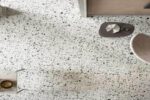Rules To Follow About FOAM FILLING

Foam filling is the process of filling tires, such as those on heavy equipment, with polyurethane foam to make them puncture-proof and provide additional stability. Here are some rules that you should follow when it comes to foam filling:
Follow the manufacturer’s instructions: Foam filling should only be done by a trained professional who follows the manufacturer’s instructions for the particular foam filling material and equipment.
Wear appropriate safety gear: Foam filling can release fumes and chemicals that can be harmful to your health. Always wear appropriate personal protective equipment (PPE), such as gloves, goggles, and respirators.
Use proper equipment: Make sure that the foam filling equipment is in good condition and properly calibrated before use. This will help ensure that the foam fills the tire evenly and at the correct pressure.
Do not overfill the tire: Overfilling the tire with foam can cause the tire to burst, which can be dangerous. Make sure to follow the manufacturer’s instructions for the appropriate amount of foam to use.
Proof That FOAM FILLING Works
Here are a few ways in which foam filling has been proven to work:
Enhanced Mechanical Properties: One of the most significant benefits of foam filling is the improvement in mechanical properties. When the void spaces within a material are filled with foam, it creates a more rigid and robust structure, which can withstand greater stresses and strains without deformation or failure. This has been demonstrated in various applications, such as reinforcing concrete structures, filling tires, and strengthening boat hulls.
Improved Thermal Insulation: Foam filling also provides improved thermal insulation, as the foam material has a low thermal conductivity, which means it can resist the transfer of heat. This is useful in applications such as insulating walls, floors, and ceilings, as well as refrigeration units and transportation containers.
Increased Buoyancy: Foam filling can increase the buoyancy of materials, which is essential in marine and aerospace applications. By filling void spaces with foam, the overall density of the material is reduced, making it more buoyant and capable of floating or flying with less energy.
Why Most FOAM fillings Fail
There are several reasons why foam filling can fail, including:
Improper Mixing: Foam filling requires precise measurements and mixing of chemicals. If the mixing is incorrect, it can result in an incomplete reaction, leading to foam that doesn’t expand fully or has weak spots.
Moisture Content: The presence of moisture can interfere with the foam’s expansion and hardening process. Even a small amount of moisture can cause the foam to shrink, leading to voids and weak spots.
Improper Application: The foam must be applied in the correct amount and at the proper temperature. If the foam is over-applied, it can lead to over-expansion, which can cause the foam to break or fail. Similarly, if the foam is applied at a temperature that is too high or too low, it can cause the foam to expand improperly.
Incompatible Materials: Some foam-filling materials may not be compatible with the object or material being filled. If the foam material is not compatible, it may not adhere properly, resulting in weak spots or voids.






